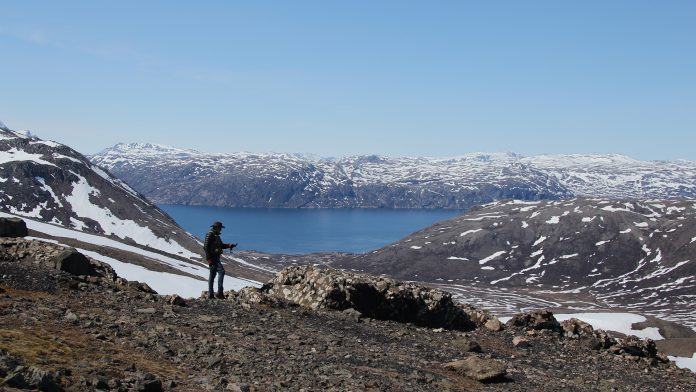Australian mineral explorer Eclipse Metals Limited (ASX: EPM) is preparing for a busy 2022 field season in Greenland, analysing the country’s abundance of rare earths.
Eclipse is actively exploring the historic Ivittuut cryolite mine in southwestern Greenland as well as the nearby Grønnedal carbonatite complex, having identified its multi-faceted commercial potential for cryolite, rare earth elements (REE) and high purity quartz (HPQ). Exploration completed since acquiring the project has added evidence the project also contains lithium, siderite and several base metals.
Now the Company is preparing to take its next step in exploring Ivittuut (also known as Ivigtût) and Grønnedal, having received approval from Greenland’s Mineral Licences Safety Authority (MLSA) to proceed with drilling during the 2022 field season.
Assessing Greenland’s rare earths
The primary objective of this season’s fieldwork will be to facilitate a better understanding of the geochemistry of the identified target areas and gather further data on REE levels in the Grønnedal carbonatite and related geology.
Eclipse Executive Chairman Carl Popal said: “Mobilising the drilling team to the site is an exciting step for Eclipse, and we look forward to commencing our first drilling campaign at our Greenland project to build on our existing knowledge and shape future exploration at the Grønnedal carbonatite-syenite complex – one of Greenland’s prime rare earth element targets.”
Mr Popal visited Ivittuut and Grønnedal to assess site conditions ahead of the 2022 field season. This assessment of ground conditions helped the Company in planning access and drillhole location, allowing it to engage a Greenland-based drilling contractor to undertake the proposed drilling.
“We took the drillers onsite and discussed the mobilisation of appropriate equipment. We were also able to locate several historical drill collars, which will assist in planning the Company’s drilling program,” Mr Popal said.
Eclipse commenced discussions with Greenland Government representatives, including officials from the MLSA and the Environmental Agency for Mineral Resource Activities (EAMRA). The meetings gave Eclipse a chance to discuss requirements for a mining licence application for Ivittuut, especially regarding the environmental needs of the existing Ivittuut pit in light of a new mining development.
“We have received some positive responses and are encouraged to work with environmental officers to develop the requirements to dewater the pit. We will engage a specialist to assist with addressing these requirements, and undertake decisive community consultation to ensure dewatering is in line with best practice,” Mr Popal said.
Utilising the European Space Agency’s imagery
On the back of this regulatory progress, Eclipse has also received positive news from satellite imagery analysis completed over Ivittuut.
The Company’s consultants completed the analysis of satellite imagery from the European Space Agency’s Sentinel-2 satellite, aiming to remotely sense surface features relating to the project’s geology and mineralisation. The analysis identified numerous spectral anomalies indicative of hydrothermal alteration with associated iron oxides, sulphides and/or clays.
The analysis identified coincident jarosite, goethite and kaolinite mineral index anomalism over the historic Ivittuut mine precinct, particularly over the waste dumps, confirming the effectiveness of the method in the context of the project. In addition, it showed two large, coincident jarosite, goethite and kaolinite mineral index anomalies within the project that have never been sampled or drill tested.
“We are delighted that our Sentinel-2 satellite imagery analysis, which is a proven and cost-effective technology for screening large areas of exposed rock, has delivered new high-priority targets for REE and base metal mineralisation,” Mr Popal said.
“We plan to field check the highest-ranked anomalies as part of the ongoing summer exploration campaign.”
Eclipse’s field reconnaissance of these and several other high-priority spectral anomalies may include grab sampling in areas of magnetic and electromagnetic (EM) anomalism, detailed geological mapping and re-logging of historical drill core, data integration and interpretation and generation and testing of drill targets. It aims to commence these activities during the current northern hemisphere summer exploration campaign.
Eclipse’s future research
Earlier this year, Eclipse announced a collaborative research program on the mineralogical and petrological characterisation of the Ivittuut mine in Greenland with world-renowned rare earths specialists Professor Adrian Finch at the University of St Andrews, UK, and Associate Professor Henrik Friis at the Natural History Museum at the University of Oslo, Norway.
The planned research will focus on the impact of hydrothermal fluids on the movement of elements in and out of critical metal deposits.
Eclipse recently dispatched samples to researchers involved to allow for mineralogical assessment and academic analysis of the project’s unique REE carbonatite properties.
With an increasing global focus on green technologies and a zero-carbon future, the Company anticipates that the academic project will further its understanding of the genesis and controls of REE mineralisation in its Ivittuut mine with implications for its Grønnedal carbonatite project.
In addition to its plans for Ivittuut, Eclipse is also interested in its past mining history. The Company has met with residents with memories of the mining era and would like to hear from others to gather a history of the site so Eclipse can play an active role in its preservation.
The Company has started a dialogue with the municipality of Sermersooq to establish how it can assist in the restoration of the Ivittuut mine museum.






